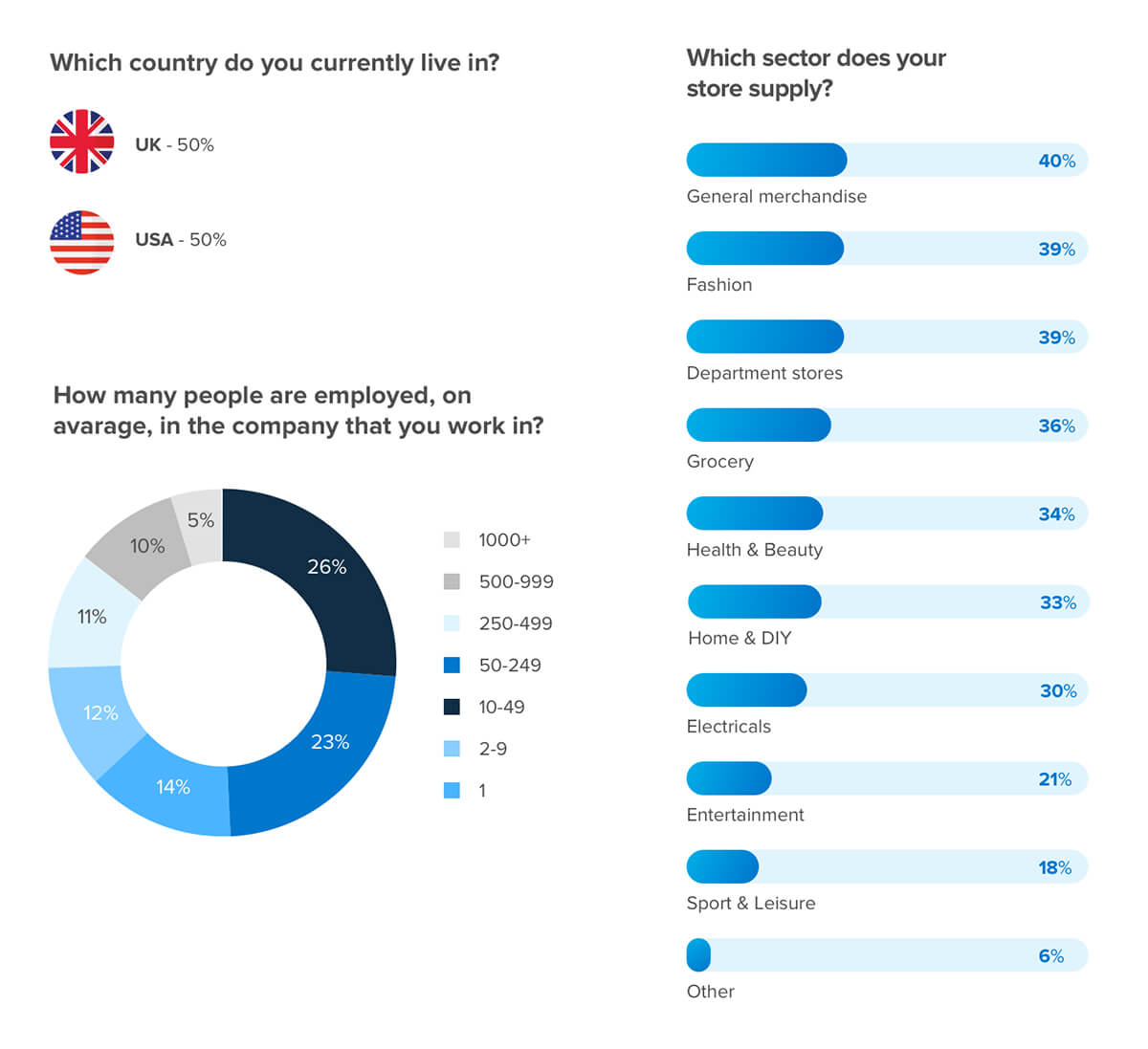EBOOK
Personalization After COVID-19
Published: Aug 19, 2020
This report examines the impact of the COVID-19 crisis on eCommerce companies and their website personalization strategies & personalization trends that could follow.
Based on research conducted in July 2020 with 400 eCommerce leaders across the US and UK, it explores the current state-of-play in the sector, the challenges it faces, and where it’s heading next.
Here are some of the key findings:
The COVID-19 pandemic saw eCommerce make 10 years’ worth of growth in a 90-day period. But rather than pause their personalization efforts in the face of change, eCommerce teams have learned the lessons of ‘black swan’ events of the past and are moving ahead with ambitious plans for the next year.
The shift in consumer behavior underlying the boom means that personalization is now being deployed more for retention, rather than acquisition or conversion, purposes.
For eCommerce teams, scaling personalization comes with the key obstacles of lack of resource and restrictive personalization tools.
Rather than be fazed by the prospect of increasing privacy restrictions, eCommerce marketers are optimistic about how their personalization programs will benefit from them.
Read on to discover how the crisis has accelerated eCommerce marketers’ ambitions for website personalization and their plans for 2021.
A New Era of Innovation
The COVID-19 crisis has drastically changed the landscape of eCommerce. McKinsey reported the sector as having jumped forward 10 years in a 90-day period, referring to this monumental shift as ‘The Quickening’. There are stark parallels with the 2008 financial crisis, where this black swan event gave rise to the rapid growth of eCommerce companies such as Alibaba.
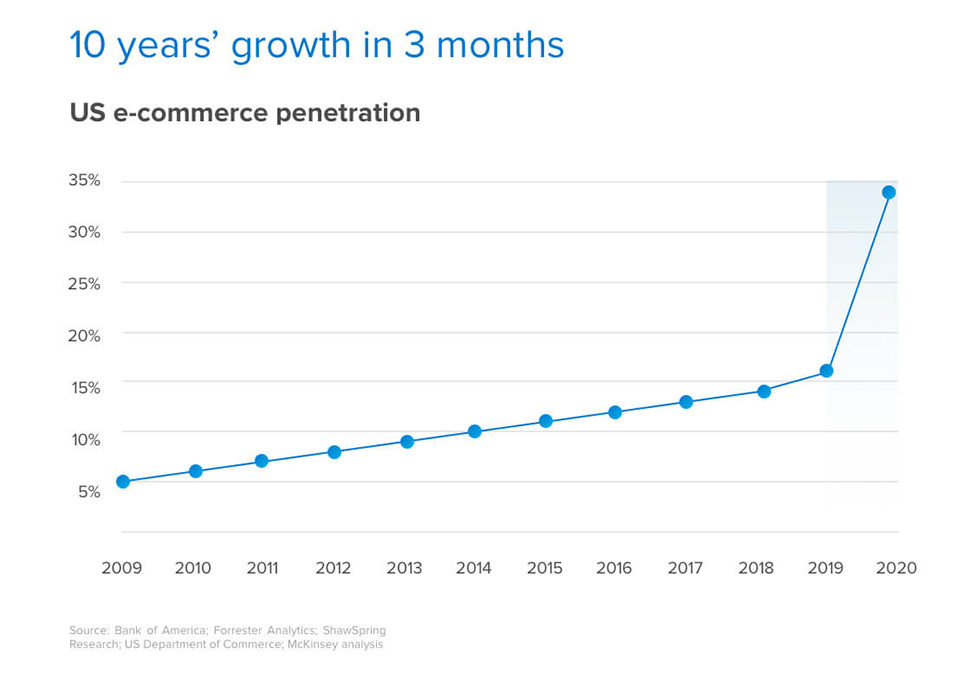
The eCommerce industry is left with two competing trends: the positivity of vast growth in immediate traffic, coupled with the uncertainty of bracing for a potential economic slump.
When it comes to digital innovation, challenges like this often lead to a bifurcation in the industry: those who stagnate, and those who move forward faster than ever.
Our research found that COVID-19 is seeing very few eCommerce professionals content to stagnate when it comes to personalization. Over 74% of companies surveyed have a website personalization program in place, with adoption of advanced functionality such as dynamic segmentation expected to reach 93% by the end of next year. The overwhelming trend is that progress continues faster than ever.
This acceleration comes against a backdrop of increasing consumer demand for personalization: an Accenture report revealed that 75% of consumers are more likely to buy from brands offering personalized online experiences. This demand was cited as a key motivator for over 50% of respondents.
This bar-raising in website personalization is great news for the industry – but like the rest of this report details, it’s not without changes in focus and challenges in execution.
The Current State of Personalization
Looking at the adoption of personalization across all channels, website personalization leads the pack, ahead of channels such as SMS (42% personalization adoption) and mobile apps (56% personalization adoption).
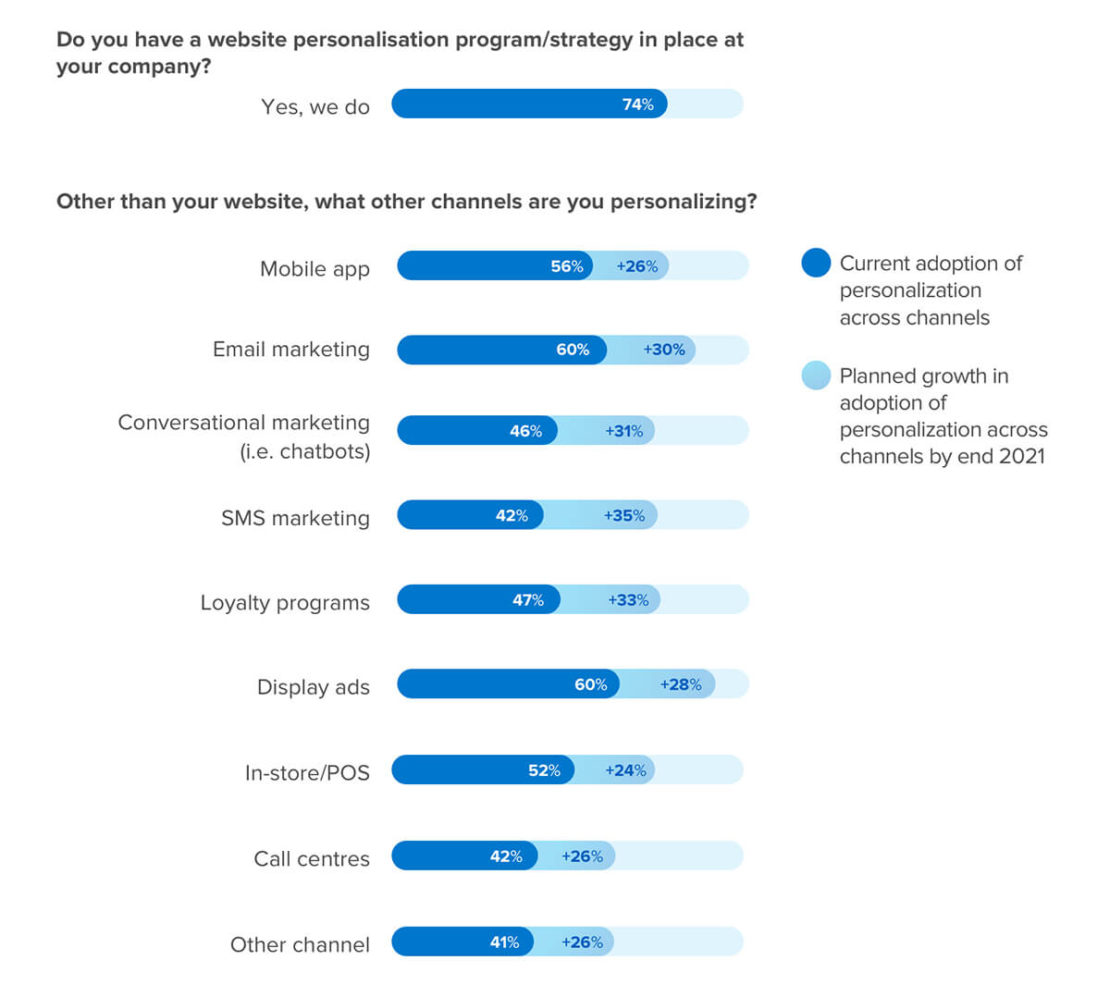
However, there’s clear appetite for scaling efforts across new channels. Loyalty programs, SMS marketing, and conversational marketing are predicted to see the largest increases in adoption by the end of 2021.
So if website personalization is so well-adopted, exactly what does that mean? The term covers a broad range of different approaches. The first step of unpacking this is to understand what kind of data is being used to drive website personalization.
At present, the most popular option for driving website personalization is real-time behavioral data, used in over 75% of cases. This indicates that website personalization is largely generated in response to in-session behaviors, which bodes well for the future (see more in the chapter What Happens Next).
Other forms of data – whether driven by cookies or ingested from CDPs and other channels – fall behind in their adoption, though each one can be expected to reach over 90% adoption by the end of next year.
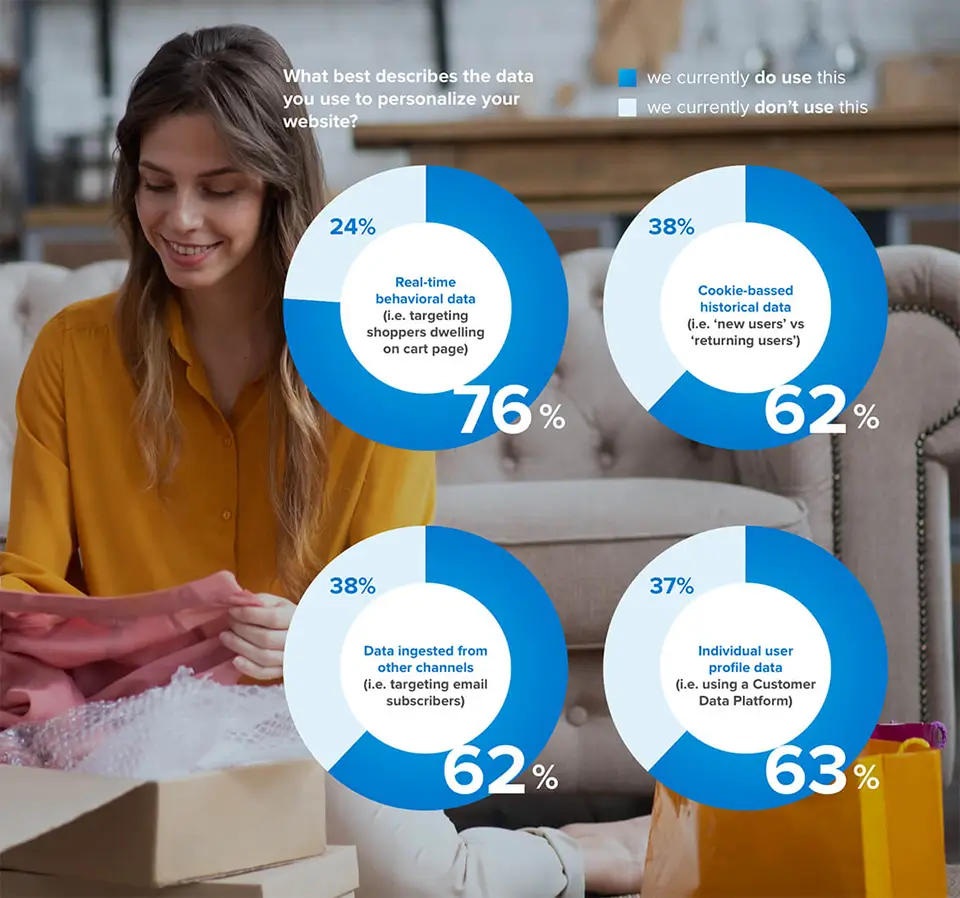
The next dimension examined was how that data is then being used to segment. When asked about segmentation methods, respondents indicated that aside from real-time decisioning, segments were more likely to be static (69%).
By comparison, only 54% currently use AI-driven predictive segments. However, this was identified as an area of high potential growth, as 89% expected to be using it by the end of next year.
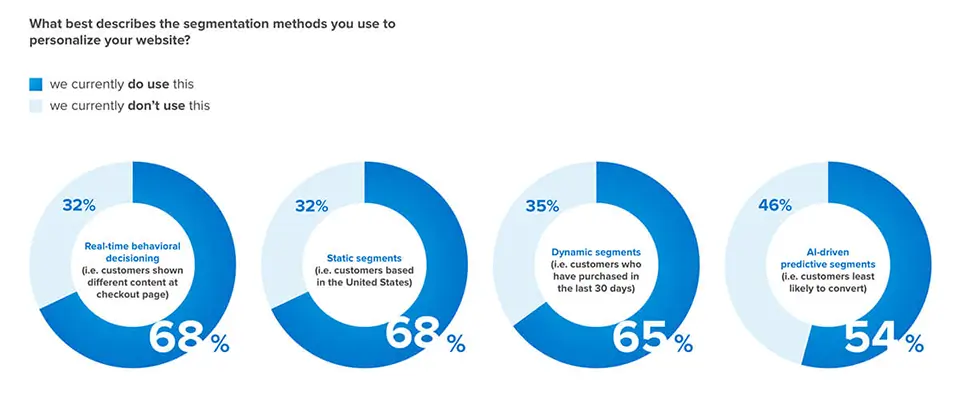
Within this landscape of largely behaviorally-driven website personalization, the research then looked at what kind of content is being personalized.
What became clear is that personalization largely takes the form of static content (69%), but that over half of users are pushing ahead into using either dynamic creatives (60%) or user-specific content (57%). The highest appetite for growth lay with the former.
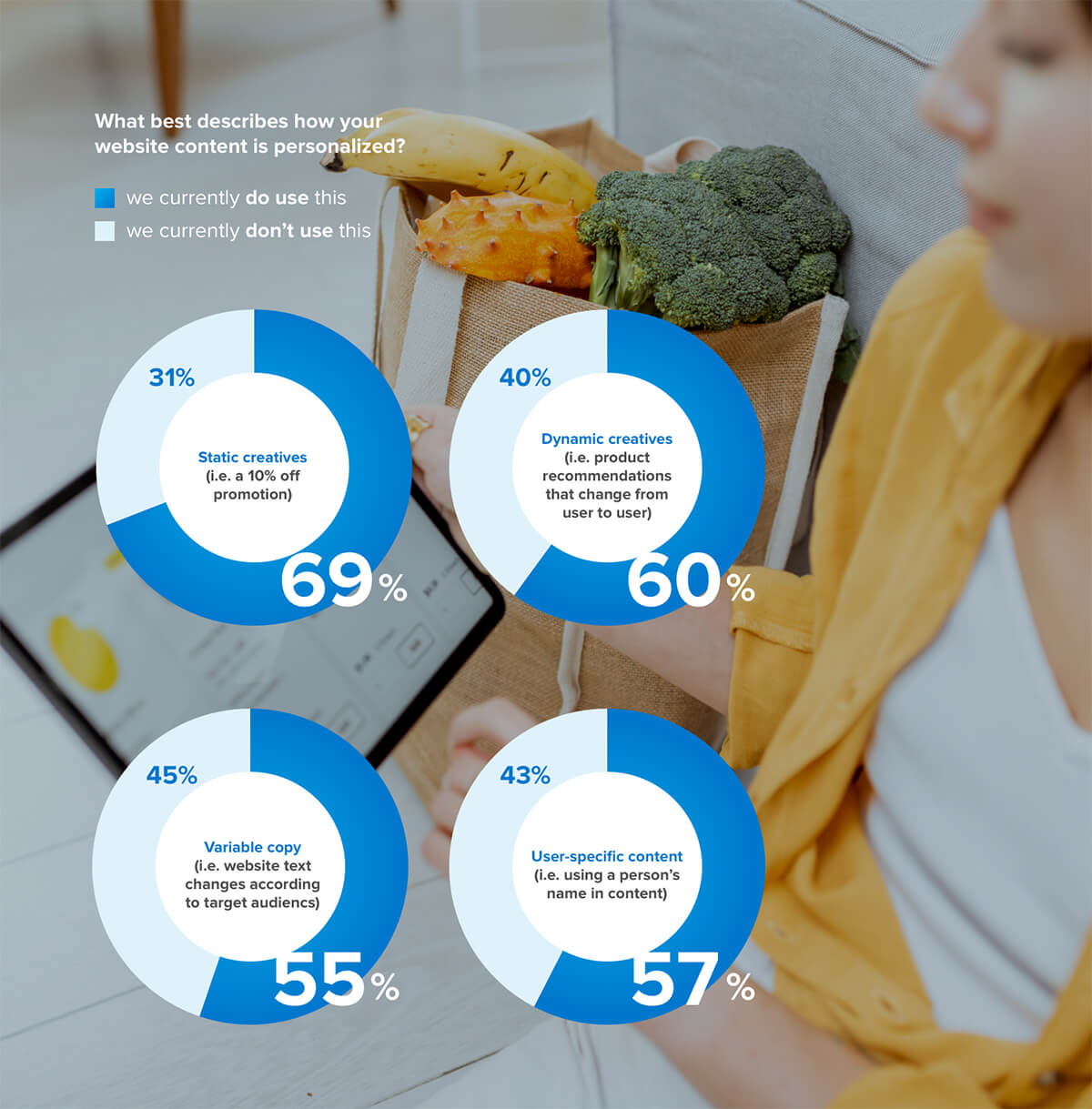
In sum, the current state of play for website personalization indicates an industry that intends to accelerate rapidly over the course of the next year. Where adoption rates currently hover between 50% and 70% for many executions, many were forecast to reach over 90% in less than 18 months’ time.
The Loyalty Paradigm
If the adoption of website personalization is already strong and growing fast, our next question is what eCommerce teams are trying to achieve in doing so. In 2020, retention (58%) has overtaken conversion (55%) and acquisition (45%) as the key goal.
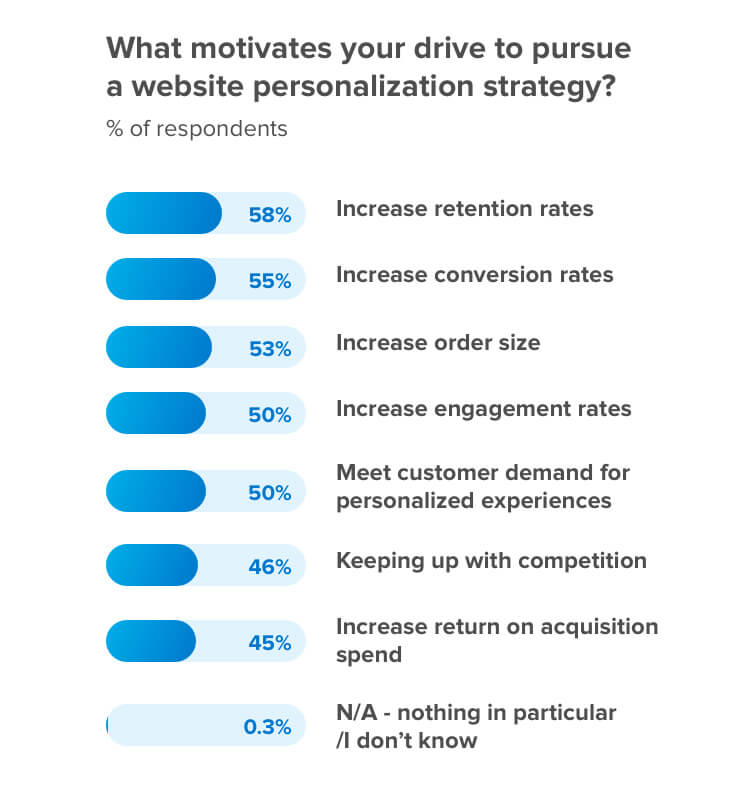
The reasons why become clear on examination of the impact of COVID-19 and ‘The Quickening’.
The most obvious explanation is that acquisition and conversion have become less important on account of the vast increase in online shopping that came with the closure of brick-and-mortar stores. Simply put, it seems that conversions are easier to come by – for now.
However, the reasons for a focus on retention go beyond that. COVID-19 has provoked more fundamental changes in consumer behavior that have made them less loyal. As a result of the pandemic, two key purchase drivers reigned king: availability (due to supply chain disruptions) and price (due to economic uncertainty).
That means that shoppers are happily ‘jumping ship’ to get what they need for a better price. With between 65 and 85% of consumers intending to continue new shopping behaviors post-pandemic, the pressure is on for eCommerce businesses to optimize the entire customer lifecycle.
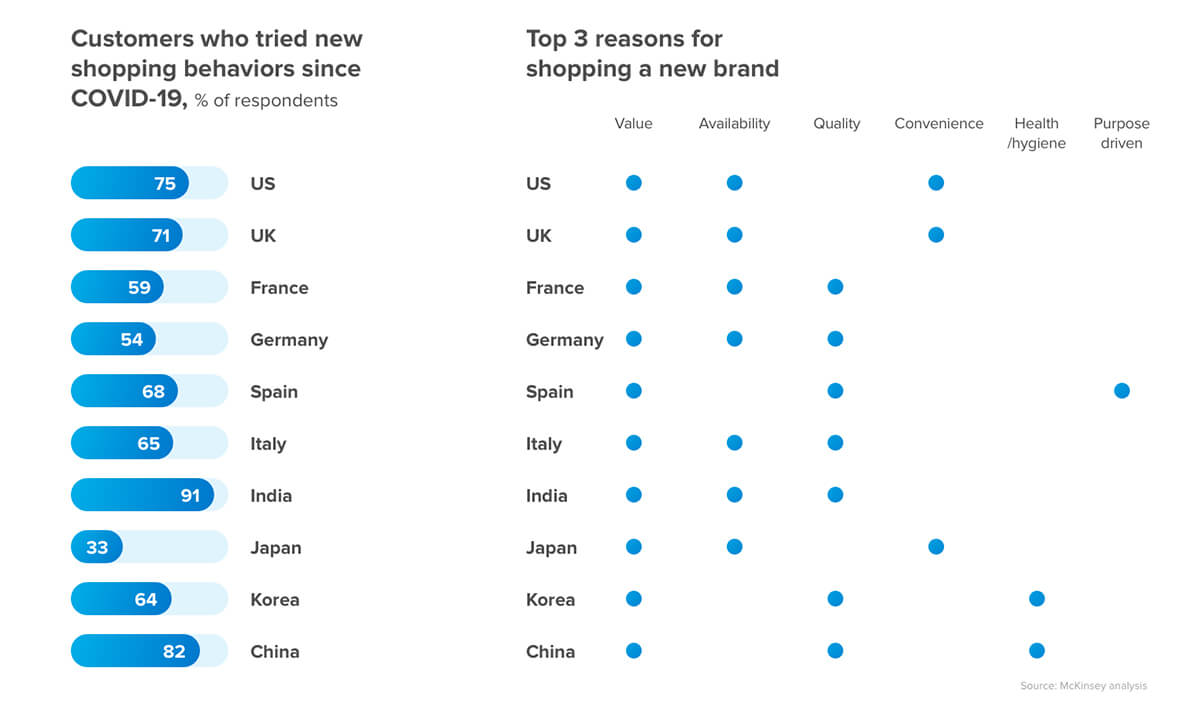
eCommerce businesses are therefore now looking to use website personalization to tap into the lucrative revenue opportunities associated with customer loyalty and keep hold of a newly-acquired customer base as a result of the temporary boom.
Our next chapter looks at how they’re trying to do it.
How this breaks down
Stat 1: The UK is a step ahead in this game: there’s a 16pp. difference between marketers in the UK who have a website personalization strategy than their US counterparts.
Stat 2: The retention issue is more acute in the US, where eCommerce marketers were the most motivated to increase retention rates, with a 10pp. lead on their UK counterparts.
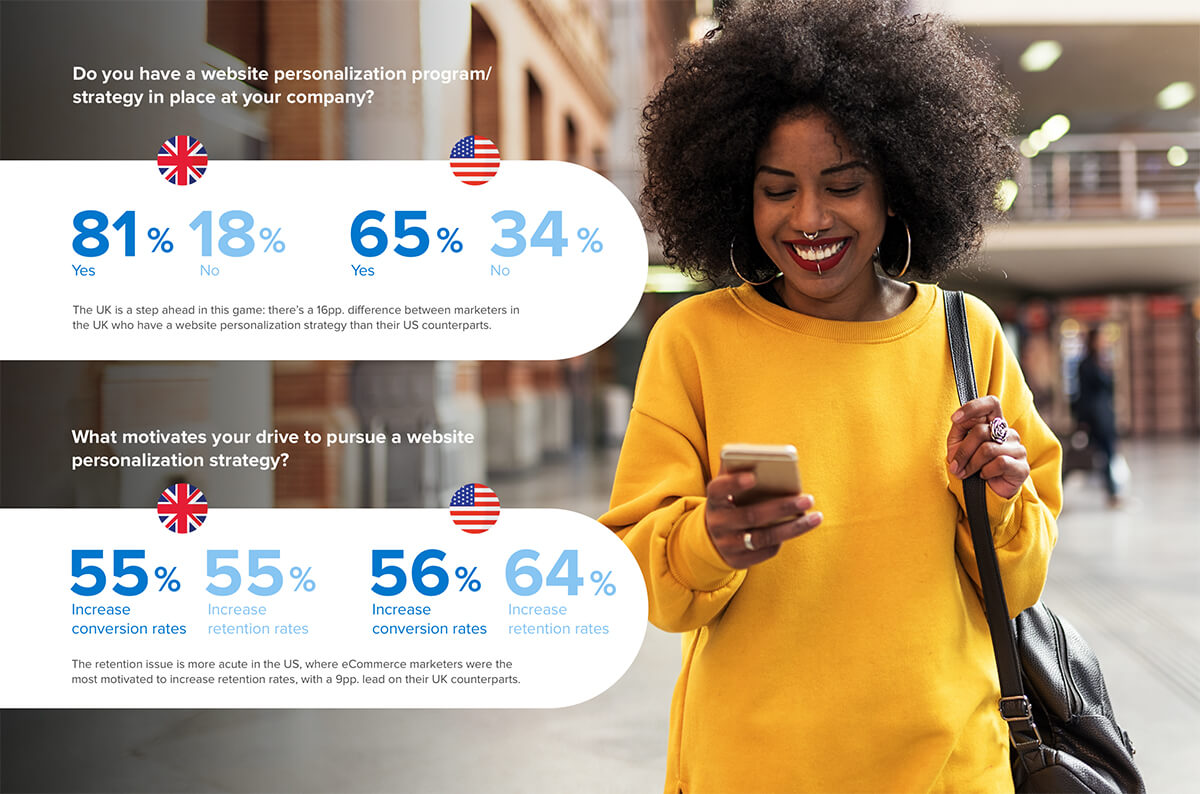
Stat 3: Sports and leisure retailers took the lead for loyalty over other sectors, with a huge 82% looking to improve retention.
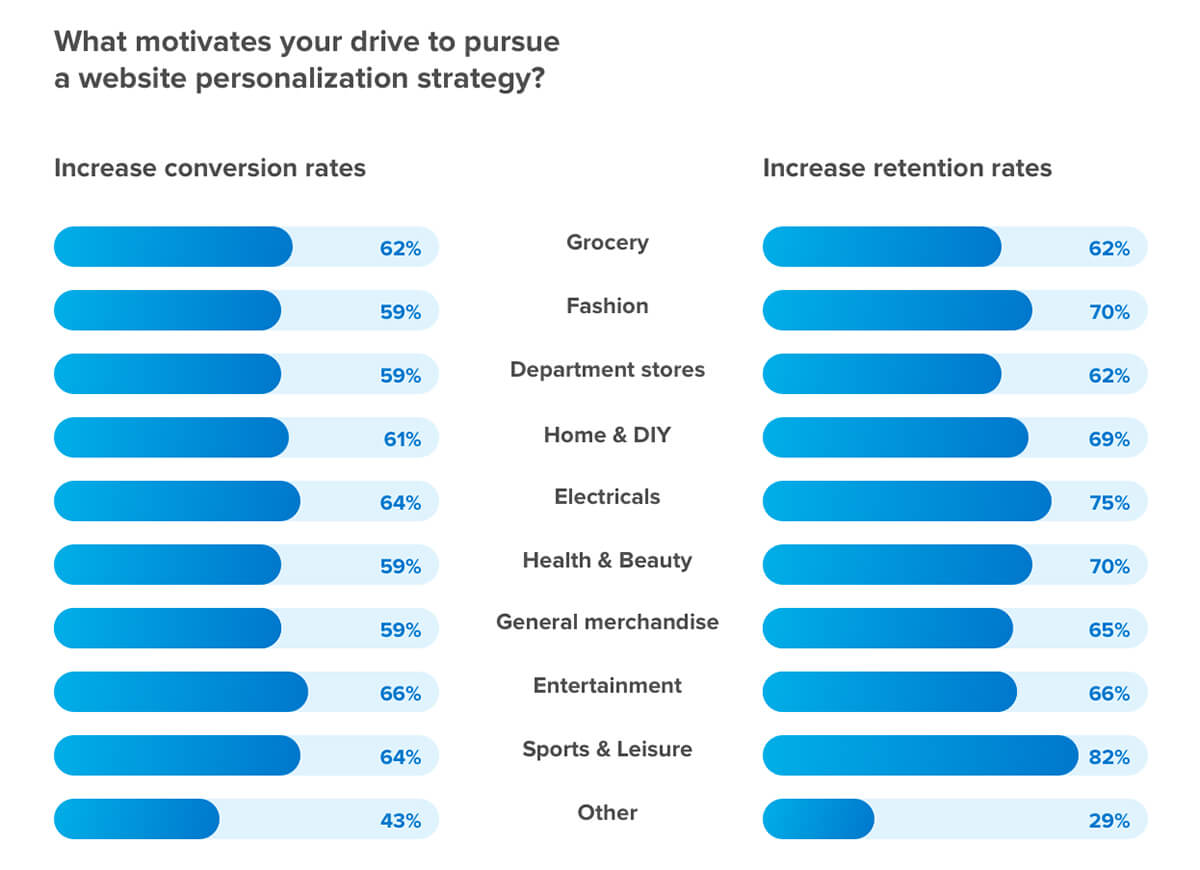
Obstacles to Scale
With such big ambitions for personalization, it’s key to understand where the obstacles may lie in fulfilling them.
Global:
- Resource: A lack of expertise 37%
- Tools: Limited functionality 36%
- Resource: A lack of time 35%
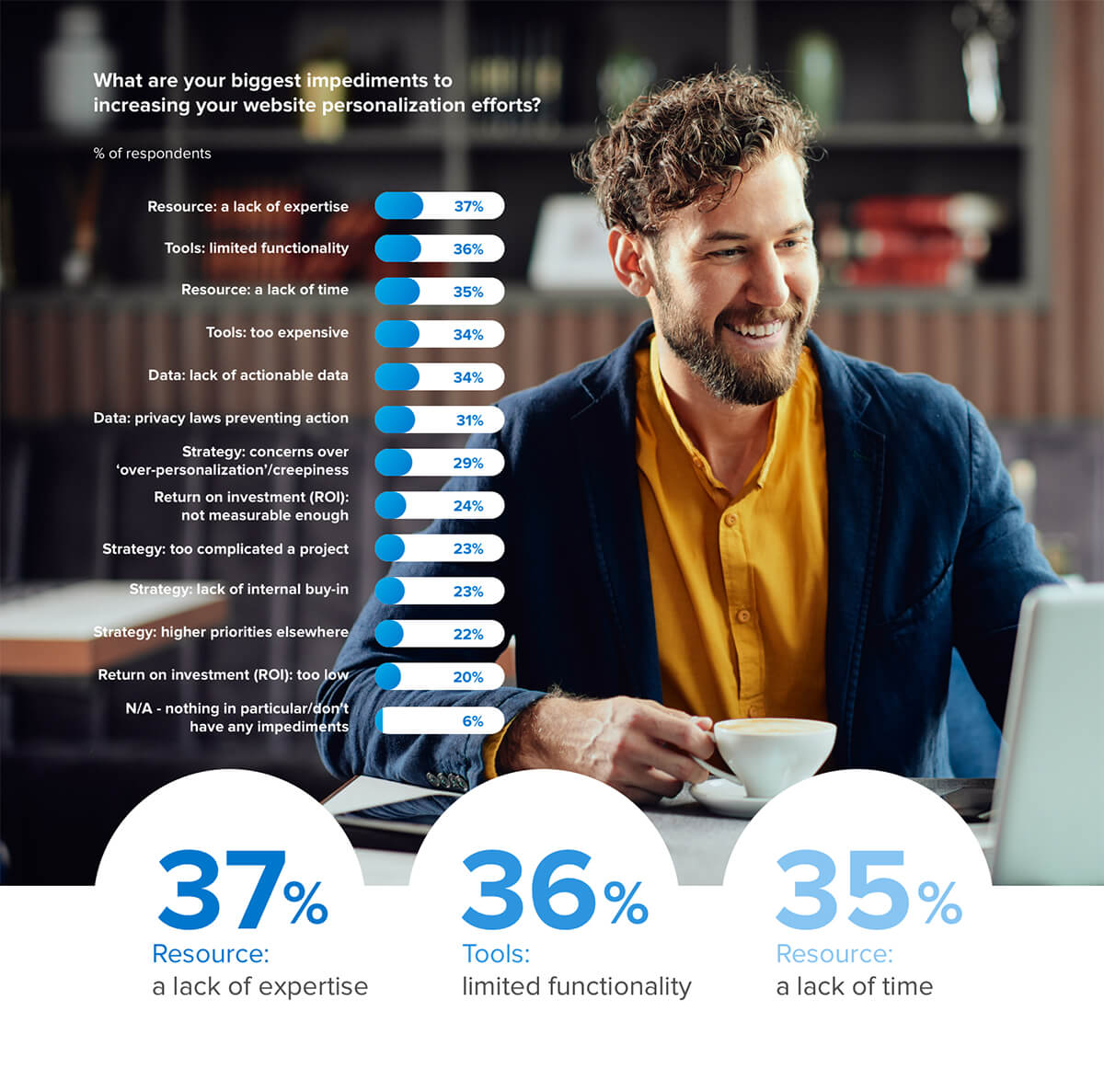
The biggest challenge to the eCommerce team attempting to execute website personalization is one of expertise. Even the simplest of personalization technologies demands a unique skill set in order to use them effectively – as a new area of expertise, the hires that can deliver are few and far in between.
Another pressing issue is one of time: unsurprising when considering the levels of furlough and redundancy made as a result of the pandemic. Today’s eCommerce teams are usually having to do more with less, making a lack of time a perennial issue. Even the biggest companies (1,000+ employees) were affected over 63% of the time.
However, tools with limited functionality also proved to be a key issue across the board. This indicates that while ambitions for personalization programs are high, execution is hindered by a lack of technology solutions designed to meet the specific needs of eCommerce marketers. This is particularly true for non-enterprise businesses, given that many personalization solutions were designed for large-scale companies.
Much lower on the scale of challenges were the strategic considerations, such as measuring ROI or getting internal buy-in. This speaks to the initial observation that eCommerce businesses have a clear understanding of the strategic necessity of personalization, and have no intention of scaling back their efforts in the face of uncertainty.
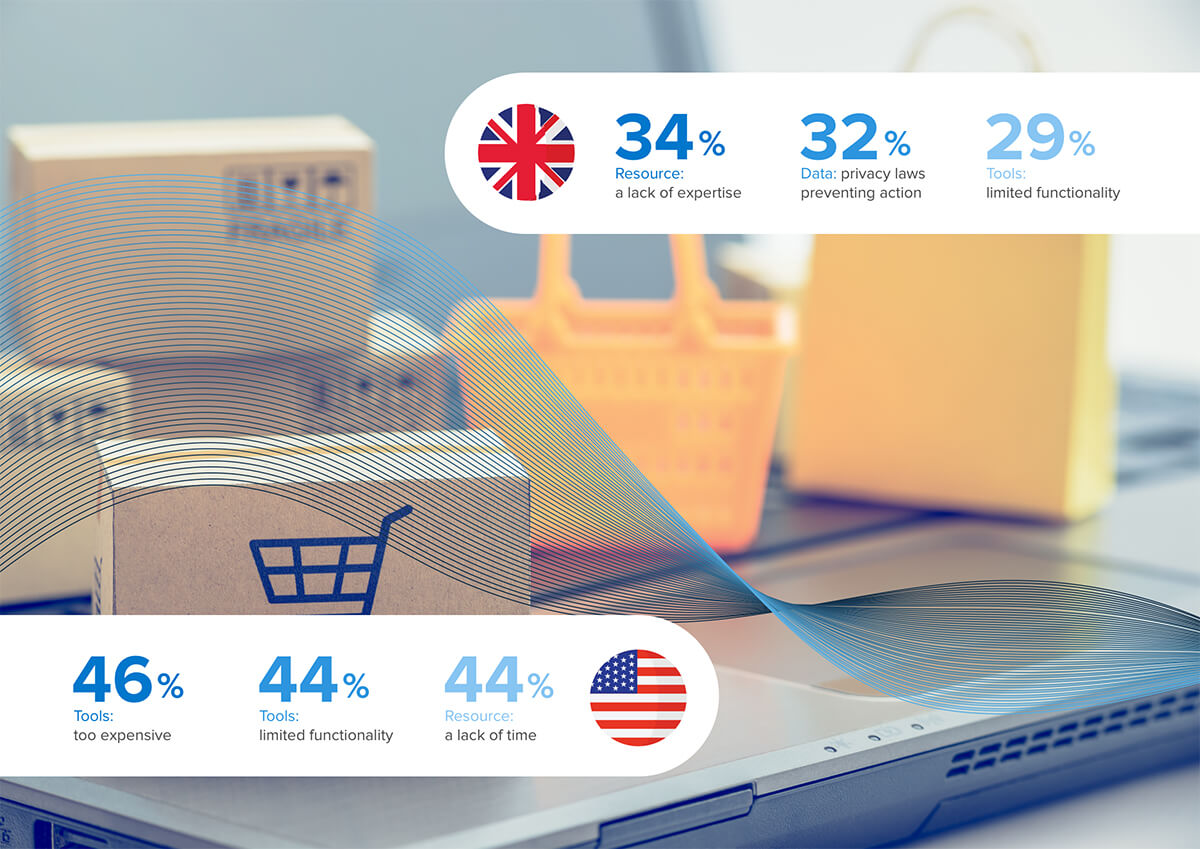
UK:
- Resource: A lack of expertise 34%
- Data: Privacy laws preventing action 32%
- Tools: Limited functionality 29%
US:
- Tools: Too expensive 46%
- Tools: Limited functionality 44%
- Resource: A lack of time 44%
Between the two markets surveyed, challenges appeared more pronounced in the US, which goes some way to explain the 15 percentage point gap between personalization adoption in the UK vs the US.
Another key difference was that UK marketers ranked data and privacy laws as their second most obstructive challenge. eCommerce professionals in the UK having likely been affected by GDPR, this comes as little surprise. However, eCommerce companies on both sides of the Atlantic should be bracing for this concern to increase over the coming years, as we explore next.
What Happens Next
If eCommerce teams are running headlong into a future of website personalization, what might they need to consider as they double down on their efforts?
The short answer is ‘privacy’. Over the coming years, marketers can expect to see significant changes in how customer data can be captured and used. Some of these will be legislative, such as GDPR, and some will be driven by browsers (the so-called ‘cookiepocalypse’).
What’s likely to emerge is that personalization solutions that depend on building detailed user profiles may be jeopardized. Not only will marketers be constrained in how they capture data, but they also may be unable to use it.
From this, we can expect to see a growth in how eCommerce teams use real-time behavioral data instead. As we’ve seen, many are already doing so, but in the future, we can expect to see more sophistication in the use of affinities and machine learning to make this more effective. What is currently considered as ‘behavioral triggering’ is likely to become a ‘digital body language’ approach.
There is more good news here. Over 79% of eCommerce teams expect new privacy regulations to have a positive impact on their personalization programs in the next 5 years, with over 85% of respondents feeling a level of confidence in their understanding of what’s to come.
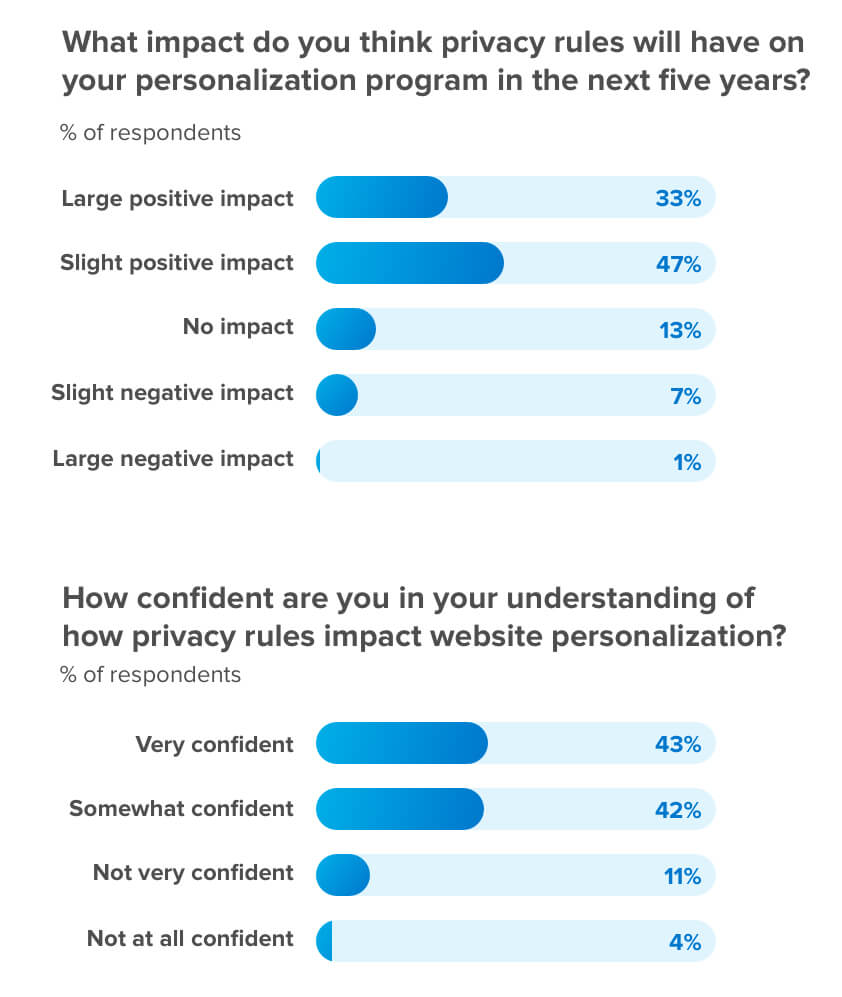
For eCommerce companies, it seems that privacy compliance is a high priority – this is good news not just for their future innovations, but for consumer experiences.
How this breaks down
Stat 1: 48% of US eCommerce marketers think privacy laws will have a large positive impact versus only 20% of their UK counterparts.
Stat 2: Health and beauty retailers were most confident in their understanding of privacy regulations, with 60% citing they were very confident.
Stat 3: Large enterprises of 1,000 employees or more were most concerned about privacy laws having a large negative impact.
In Conclusion
When COVID-19 sparked a chain reaction in consumer behavior, the eCommerce industry was quick to react: its drive towards innovation in website personalization is no exception.
The eCommerce companies that thrive in the long-term will be the ones who keep their eyes and ears open to the demands of tomorrow (not just to those of today). Successful personalization programs in two years’ time will look very different from what the market has been accustomed to, and the smartest teams will already be building towards them.
There’s an additional important lesson here for those businesses that serve the personalization needs of eCommerce companies – tech vendors and agencies alike. The tools and resources on offer at present simply aren’t enough – the suppliers that succeed will be the ones to evolve their offerings to meet the new, accelerating needs of a ‘Quickening’ market.
Appendix/Methodology
An online survey was conducted with a panel of potential respondents. The recruitment period was 6th July 2020 to 20th July 2020.
A total of 400 respondents completed the survey. This was made up of 200 respondents residing in the UK and 200 respondents residing in the US.
Only senior marketers or eCommerce directors at retailers with an eCommerce presence were eligible to take part and complete the survey.
All questions within the survey were verified to be MRS compliant by a marketing research company specializing in online and mobile polling.
